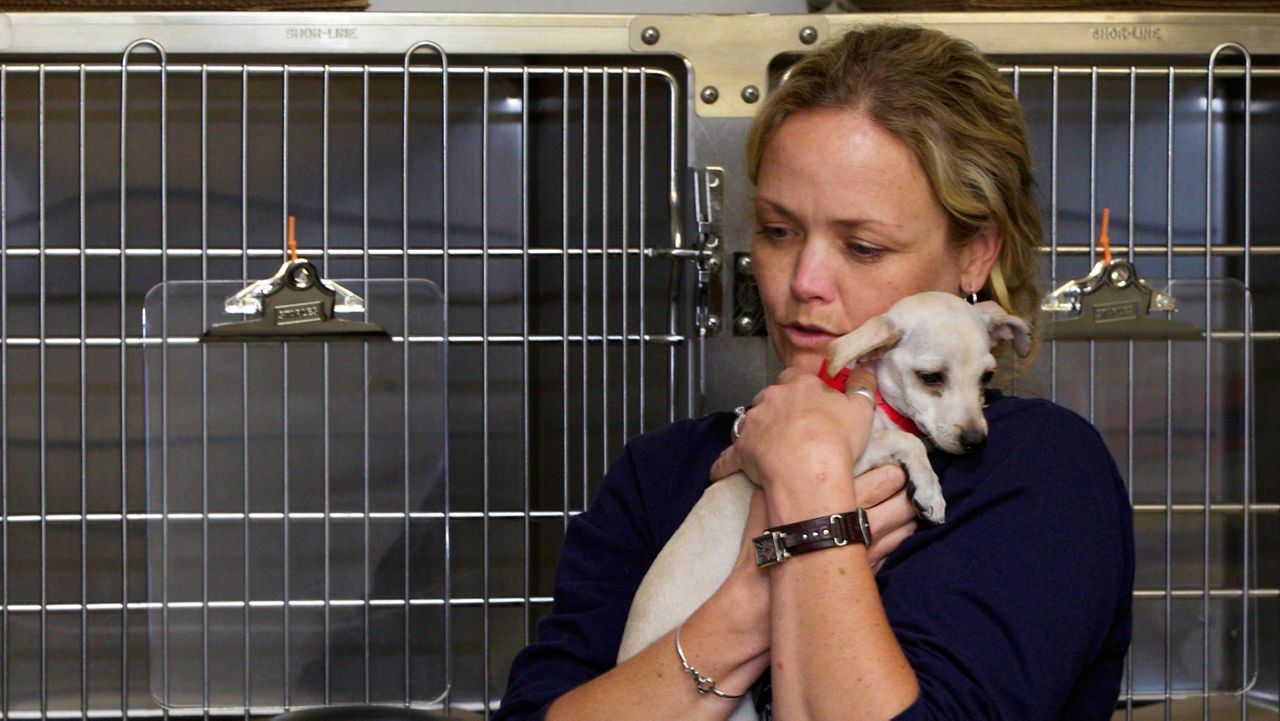LOS ANGELES — Los Angeles’ Department of Animal Services is accepting more animals with less staff to adequately care for them, according to a new report from City Controller Kenneth Mejia.
Released on Mejia’s 100th day in office Wednesday, the report found the city’s six shelters are so overcrowded that two or three dogs often live in the same kennel and receive just 15 minutes of care daily. Many of those dogs are not walked daily, or even for weeks.
“Many issues impede the department’s ability to maintain the gold-standard level of service the animals deserve and the public have come to expect,” the report states.
Citing the Department of Animal Services 2023 to 2024 fiscal year budget, the report found staff shortages led to insufficient animal care and customer service deficiencies, including difficulty maintaining clean kennels, inadequate staffing to operate six animal service centers around-the-clock and increased liability with dog-bite injuries.
The number of animals the department has taken into its six shelters has been increasing since 2021, the report found. In January, five of the six shelters had dog populations greater than the number of kennels. While adoptions have been increasing since the pandemic, the city’s Animal Services Commission said in January that animals may need to be euthanized for space if intake levels remain at their current levels or increase. At no-kill shelters, where the department has a benchmark of saving 90% of cats, kittens and dogs, the report found that cats were not saved at the benchmark rate.
The report cited chronic understaffing for many of the problems. It found that staff absences were common and that animal care technicians worked 70% of the hours available to them. It also found the department had 47 vacancies. A report from former City Council member and City Controller candidate Paul Koretz last year found the department had just 300 staff.
While volunteers often fill the void to assist with walking dogs, cleaning cages and helping with small animals such as rabbits and guinea pigs, the report said the process for volunteers to handle animals can take weeks or months. In 2019, volunteers worked 12,311 shifts. After dropping to 3,845 shifts in 2020, it increased to 8,418 shifts last year — far fewer than prior to the pandemic.
Mejia’s so-called transparency report is not an audit designed to manage spending. Its stated intent is to give the department, the public and policymakers a detailed look and a better understanding of shelter operations and conditions. It did, however, bring up the department’s approved operating budget for the current fiscal year (almost $27 million) and its request to increase funding to $42 million for the upcoming fiscal year to address understaffing and increased animal intakes.
Last year, Mejia leveraged the understaffed and overcrowded conditions in the city’s animal shelters in his campaign against City Council member Paul Koretz to win the city controller job. Koretz oversaw the city’s animal welfare issues and came under fire when an animal shelter volunteer spoke to the LA Times about animals lacking food and living in unsanitary conditions. Mejia, who often campaigned with his pet corgi and who also trained to become a volunteer with the department last year, won the election and assumed office in December.
Koretz issued a 50-page report about the Department of Animal Services last October, which found underfunding and staffing shortages led to dirty kennels, animal neglect and fewer spays and neuters before rescued animals were released for adoption.
Mejia’s 85-page report was based on research the City Controller’s office conducted between Nov. 29, 2022, and Jan. 31, 2023. His office spoke with animal services’ management, staff and volunteers, the report said, and also visited each of the city’s six shelters for a staff-guided tour and unannounced visits.



